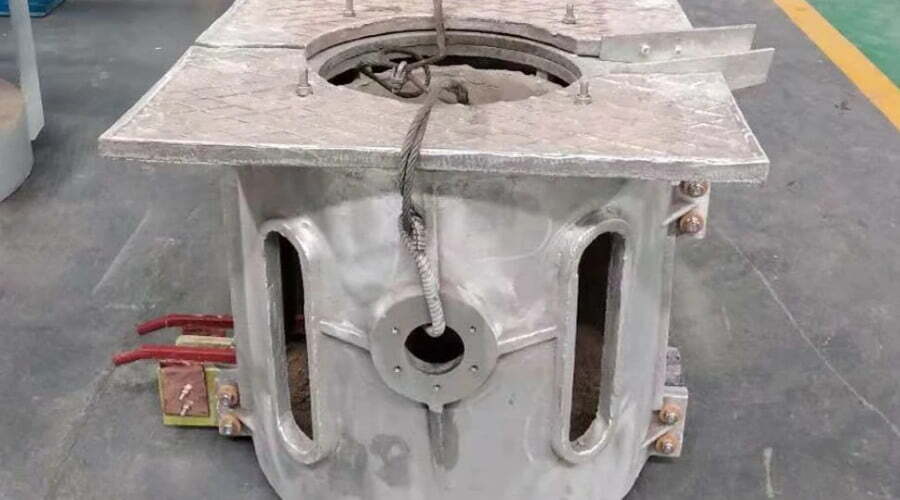How to improve the induction furnace lining life? An induction furnace is a high-temperature electric furnace heated by the eddy current effect, which is composed of a furnace body, electrical system, water cooling equipment, and tilting mechanism. The furnace body is composed of the induction coil, furnace lining, furnace frame, magnetic yoke, and fastening device. The induction furnaces can not only heat or melt in an air atmosphere, but also in a vacuum, argon, neon, and other protective atmospheres to meet the requirements of special processes. The induction furnace has very outstanding advantages in diathermy or smelting some special alloys.
The furnace lining is most easily damaged during the use of an induction furnace.
Reasons for Lining Damage:
(1) Physical Factors:
① Furnace building: insufficient compactness of furnace lining will lead to damage to furnace lining. Uneven or poor brazing between the three layers of furnace lining will result in layering of furnace lining, which is easy to be eroded by molten iron or slag.
② Smelting: lining material is easy to be washed by high-temperature melt. When the material changes rapidly, it may produce phase change and increase the volume of the furnace lining. In serious cases, the furnace lining will crack, and the impact and vibration of the feeding, electromagnetic stirring and washing will also lead to the fall of the furnace lining material.
(2) Chemical Factor:
the chemical action between molten liquid and lining material will cause the lining material to fall off.
In the process of iron and steel smelting, the furnace lining of the induction furnace is in a high-temperature alkaline environment. If the acid refractory material is used as the lining material, the furnace lining is easily eroded by the alkaline slag, which greatly reduces the service life of the induction furnace.
2. During the Use of the Furnace, the Factors Affecting the Induction Furnace Lining Life Include:
(1) Operating conditions;
(2) Furnace building and drying process;
(3) Rationality of refractory raw materials.
During the use of an induction furnace, the impact and friction of the furnace charge and electromagnetic stirring will aggravate the erosion of the furnace lining. Different refractory materials are suitable for smelting different metals or alloys.
At present, medium-frequency induction furnace is widely used in the metallurgy and casting industries. Refractory raw materials for medium-frequency furnace lining will affect the induction furnace lining life. DingerD ruler and others studied the effect of raw material particle size on the performance of dry ramming material. Wang Chengjun and others have studied the effect of aluminum-magnesium dry ramming material on the service life of furnace lining. The in-situ formation of magnesia-aluminum spinel improves the strength of the material, and the reaction is accompanied by volume expansion. Proper volume expansion can improve the slag resistance of the material, while excessive volume expansion will sharply reduce the slag resistance. Factors affecting the thermal expansion performance of aluminum-magnesium materials include the addition of silica powder, the size of magnesium sand and the amount of liquid phase formation.
During lining construction, reasonable lining-making methods can improve the induction furnace lining life. In order to ensure safety, the furnace body needs to be cleaned and inspected when making furnace lining.
When faced with small production tasks, induction furnace enterprises should take a half-day rest in production, leave 1/3 of the liquid metal at the last time when the liquid metal is discharged, keep it warm for a period of time, and continue smelting with the next feeding. This method can not only save electricity, but also prolong the induction furnace lining life. The induction furnace shall be repaired in time after it is damaged.

